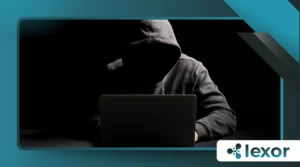How to Avoid Scams in the Crypto World

Avoid scams in the crypto world. The crypto world is a double-edged sword—offering unparalleled financial freedom while hiding sophisticated traps.
With decentralized finance (DeFi) booming, scammers have refined their tactics, making it harder than ever to distinguish between legitimate opportunities and well-disguised frauds.
Learning how to avoid scams in the crypto world isn’t just about caution; it’s about developing a security-first mindset.
In 2024 alone, the FTC reported a staggering $3.8 billion lost to crypto fraud—a 60% surge from the previous year.
This guide dives deep into the psychology of scams, real-world case studies, and actionable strategies to keep your investments safe.
Why Crypto Scams Are More Dangerous Than Ever
The anonymity of blockchain technology makes crypto a playground for fraudsters.
Unlike traditional finance, where banks can reverse fraudulent transactions, crypto transactions are irreversible—once your funds are gone, they’re gone for good.
Scammers exploit this by creating elaborate schemes that prey on both newcomers and experienced traders.
The Evolution of Crypto Scams
A decade ago, Bitcoin Ponzi schemes were the norm. Today, fraudsters use AI-generated deepfakes, fake audits, and even impersonate legitimate projects.
In 2025, the most dangerous scams involve DeFi protocols, where malicious actors manipulate smart contracts to drain liquidity pools silently.
The Psychology Behind Falling for Scams
Why do intelligent investors still get duped?
Greed and FOMO (Fear of Missing Out) override logic. A “limited-time offer” or a celebrity endorsement can trigger impulsive decisions.
Studies show that even those who understand blockchain fall victim when promised unrealistic returns.
Read more: The Role of Voice Assistants in Smart Homes
The Most Common Crypto Scams in 2025 (And How They Work)
1. Fake Exchanges and Phishing Attacks
Scammers create near-identical copies of popular exchanges like Binance or Coinbase.
They lure victims through Google ads, fake customer support chats, or even sponsored social media posts.
Example: In early 2025, a cloned Kraken website stole over $2 million before being shut down.
Read more: What Is VR Training and Why Is It So Effective?
How to Spot Them:
- Always check the URL—scammers often use domains like “Binancе.com” (with a Cyrillic “е”).
- Never click links from unsolicited emails or messages.
2. Rug Pulls and Pump-and-Dump Schemes
Developers create a new token, hype it on social media, then vanish with investors’ money.
Example: The “MoonFarm” DeFi project attracted $30 million before its creators disabled withdrawals.
Red Flags:
- Anonymous teams with no verifiable experience.
- Unrealistic APY promises (e.g., “10,000% returns in a week”).
3. Impersonation and Fake Giveaways
Scammers pose as Elon Musk, Vitalik Buterin, or crypto influencers on X (Twitter), offering “double your Bitcoin” scams.
Read more: Understanding USB-C: What Makes It the Future of Charging
Example: A verified-looking account impersonating MicroStrategy’s CEO tricked users into sending ETH for a “promotional airdrop.”
How to Avoid:
- No legitimate figure will ask for crypto upfront.
- Always verify official social media handles.
How to Avoid Scams in the Crypto World: 7 Expert-Backed Tactics
1. DYOR (Do Your Own Research) Like a Pro
Never invest based on hype alone.
- Check the team: Are they doxxed (publicly known)? Do they have a track record?
- Read the whitepaper: Vague or plagiarized documents signal a scam.
- Look for audits: Has CertiK or Hacken reviewed the project?
2. Use Cold Wallets for Long-Term Holdings
Hot wallets (like MetaMask) are convenient but vulnerable to hacks.
- Hardware wallets (Ledger, Trezor) keep your keys offline.
- Multi-signature wallets add an extra layer of security.
3. Verify Smart Contract Audits
Unaudited DeFi projects are ticking time bombs.
- Platforms like CertiK and SlowMist expose vulnerabilities.
- If a project refuses an audit, walk away.
4. Ignore “Guaranteed” High-Yield Promises
If an investment sounds too good to be true, it is.
- Sustainable yields match market averages (e.g., 5-10% APY in stablecoin farming).
- Anything above 50% APY is likely a Ponzi scheme.
5. Enable Strong Two-Factor Authentication (2FA)
SMS-based 2FA can be hijacked via SIM swaps.
- Use Google Authenticator or YubiKey instead.
- Never share backup codes.
6. Analyze Community Engagement
Scams often have fake Telegram groups filled with bots.

- Legitimate projects have organic discussions, not just hype.
- Check Reddit, Discord, and GitHub activity for real user feedback.
7. Be Wary of “Exclusive” or Urgent Offers
Scammers pressure you to act fast.
- Legitimate ICOs and IDOs don’t require immediate deposits.
- If someone says, “Invest now or miss out,” it’s a trap.
A Real-World Analogy: Crypto Scams vs. Email Phishing
Just as email scams evolved from crude “Nigerian prince” schemes to sophisticated CEO fraud, crypto scams now use AI and deepfakes.
Awareness is your best defense—just as you learned to spot phishing emails, you must now recognize crypto fraud patterns.
Case Study: The $50M “MetaYield” Rug Pull
In Q1 2025, the DeFi project “MetaYield” promised AI-powered staking with “zero risk.”
Investors poured in $50 million—until withdrawals were suddenly disabled.
Lessons Learned:
- The team was anonymous.
- The smart contract had no audit.
- Social media hype masked the lack of substance.
The Future of Crypto Security: Can Regulation Help?
Governments are stepping in, but self-education remains crucial.
- The EU’s MiCA regulations aim to standardize crypto oversight.
- The U.S. SEC is cracking down on unregistered securities.
However, regulation alone won’t stop scams—vigilance will.
Final Thoughts: Trust, but Verify
Crypto’s potential is real, but so are its risks.
By mastering how to avoid scams in the crypto world, you protect not just your funds but also the integrity of the ecosystem.
Stay skeptical, stay informed, and never let FOMO override caution.
Frequently Asked Questions (FAQs)
1. How do I know if a crypto project is legit?
Check for:
- A doxxed team.
- A clear whitepaper.
- Third-party audits.
2. What’s the safest way to store crypto?
Hardware wallets (Ledger, Trezor) for long-term holdings.
3. Can stolen crypto be recovered?
Almost never—that’s why prevention is key.
4. Are all DeFi projects risky?
Not all, but unaudited ones are extremely dangerous.
